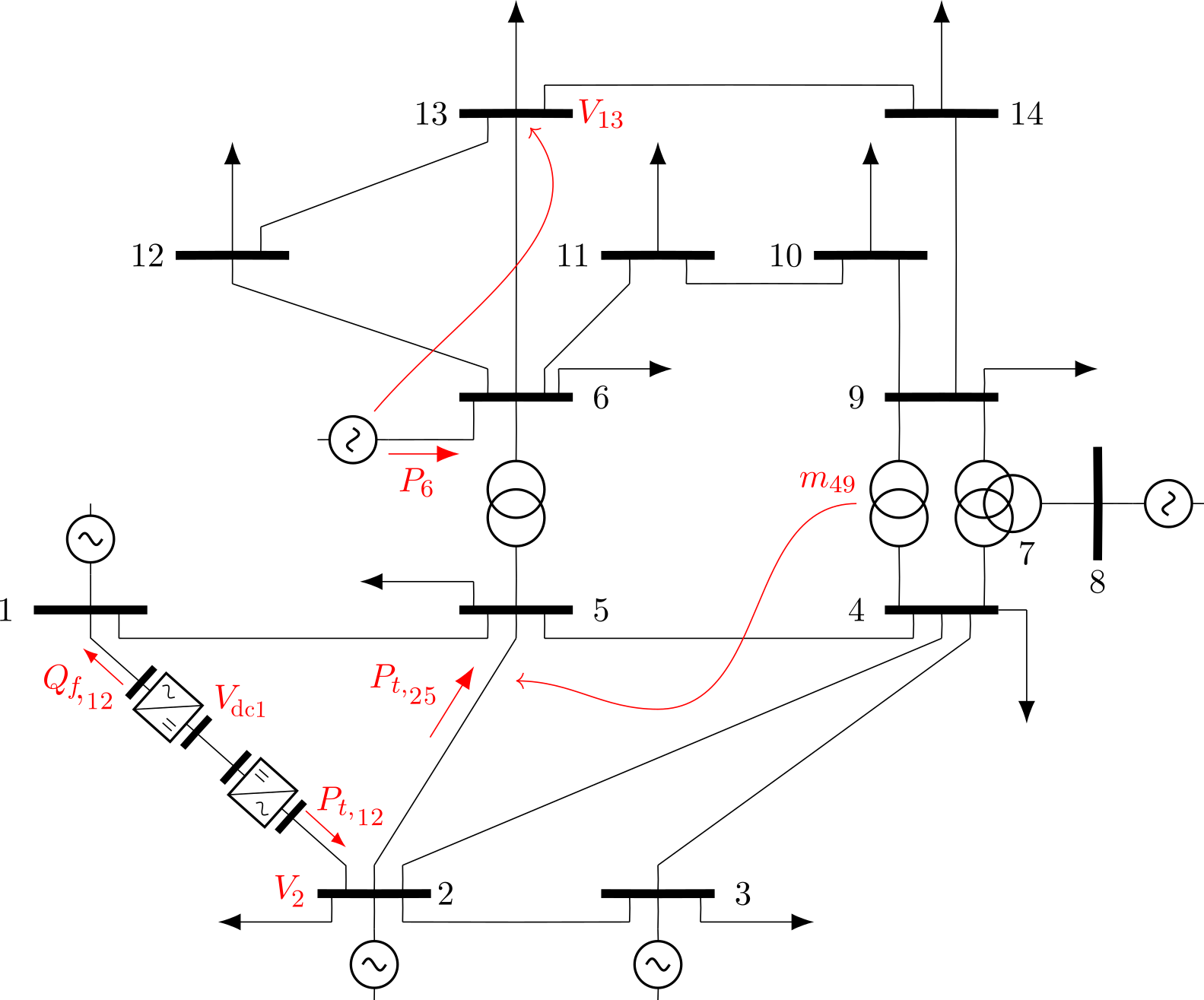Why another power flow algorithm?
In today's power grids, there is a notable ongoing shift towards the introduction of HVDC, especially in applications such as offshore hubs and cross-border interconnections. Despite this, the static analysis of power grid has remained largely based on traditional methods. These methods often become suboptimal due to the lack of key features, including:
- Correctly modelling the losses incurred by converters in their operation
- Including the extra control possibilities offered by converter-based interconnections
- The integration of remote controls and multiple controllable devices, not only converters, but also transformers and generators
- A unified methodology not tied to traditional bus types that can handle the whole system concurrently
The traditional classification of bus types into slack, PQ and PV types works just fine for 20th century grids; unfortunately, this is not the case nowadays. Modern networks may be more prone to look like this:

Furthermore, some approaches treat AC and DC grid fractions separately, and once solved individually, they couple them. This solving approach requires more iterations and can suffer from convergence instabilities. Plus, in essence, the power grid is just one large infrastructure that works as a whole, so individually modelling and solving each area is far from how the system realistically operates.
How are we solving the problem?
At eRoots, we have developed a generalized power flow methodology that includes various key considerations:
- Rich converter modelling by allowing any combination of controls for both grid-following and grid-forming converters to be mapped in steady-state.
- Inclusion of transformer tap changers, with the possibility to adjust the tap module and/or phase to control powers and voltages.
- Added remote controls from devices such as synchronous generators.
- No need for predefined bus types: you can set the controls you wish and the program will automatically determine them, without you having to worry about it.
- A custom solver based on the Newton-Raphson methods, with just-in-time Numba compilation to dramatically accelerate the computations.
- Limit checking for generators and transformers to integrate constraints into the power flow problem.
The best part of it? You can freely use this technology to solve AC/DC grids of your interest. Everything we are describing here can be tested by just downloading GridCal.
We look forward to further developments in these avenues, including joining this new development with our optimal power flow methodology.
Stay tuned for what’s next in our journey to future-proof power grids! 💡